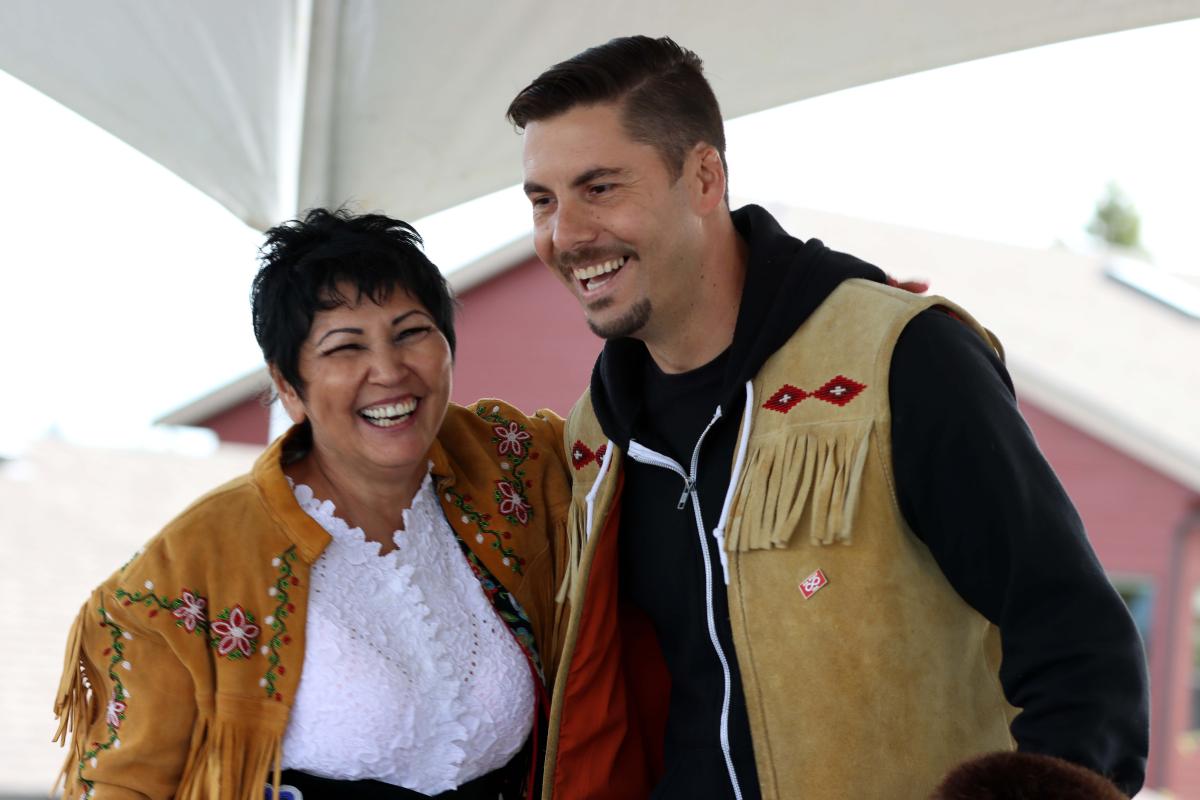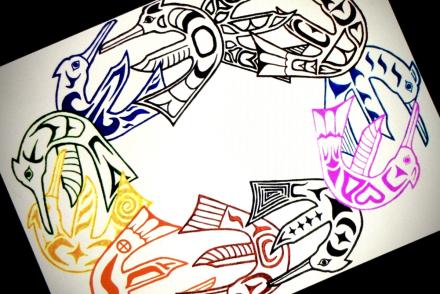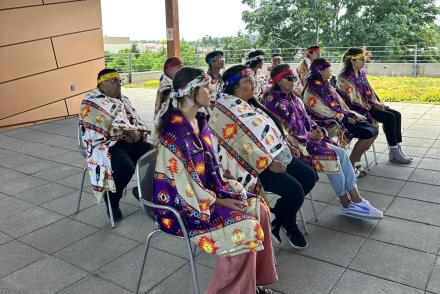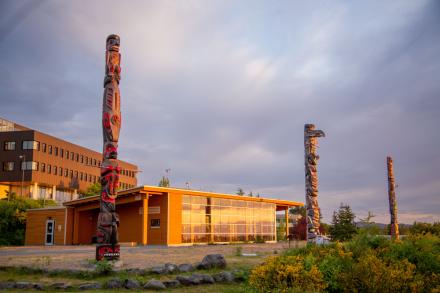
6 Teachings to improve access, success and transitions to work for Indigenous learners
The Office of Indigenous Education and Engagement regularly listens to the stories of youth, students, communities, Elders, families and other partners to determine what enables Indigenous youth to access and journey through university and then transition to meaningful work after they graduate. These learnings are shared with “all our relations” to honour our relational accountability to these groups and to invite others into the conversation.
This blog summarizes teachings received throughout a five-year learning journey through the EleV Learning Partnership with the Mastercard Foundation at VIU.
1. Include families and communities in assignments, teach from values rather than Western systems, and include Indigenous ways of knowing, being and doing into teaching practice and service delivery.
Within the VIU community and in K-12 schools, many are beginning to see how colonial policies and processes do not consider students from a holistic perspective. Colonial systems assume students come to university (or K-12 schools) as individuals, when in fact, learners who remain connected to family, community and culture thrive. This teaching lends itself to a decolonial future where teaching and learning practices as well as education systems are more responsive to Indigenous learners. When educators embody Indigenous Knowledges and teach from their values, rather than by following a prescriptive systems-based approach, the stage is set for meaningful and reciprocal knowledge exchange benefitting all learners.
2. Students need options to study and work in their communities and access to affordable and reliable Internet is an enabling factor.
VIU has worked with Indigenous communities for decades delivering community-based programs. Programs are offered to small cohorts of students in partnership with communities who infuse local traditional Knowledge from the land, language and people in conjunction with VIU instructors’ expertise. The COVID-19 pandemic made it clear access to the Internet is essential for young people from Indigenous communities to participate in education and the workforce. Only 38% of rural Indigenous communities have access to the recommended broadband Internet speeds according to Connectivity BC and an additional barrier can be the cost of Internet services. The pandemic also taught us that many Indigenous learners from rural and remote communities benefit from a decentralized model of education (learners stay home instead of coming to a centralized place to study, such as the university campus).
3. The strength of relationships, consistent communication and the energy of co-creation with Indigenous communities can clear the path to systems change.
To continue the work of improving education outcomes for Indigenous learners, governance bodies at all levels must be held accountable to articles #62-64 in the Truth and Reconciliation Commission’s Calls to Action and #14-15 in the United Nations Declaration on the Rights of Indigenous Peoples. Demonstrations of how these particular calls and articles can unfold happens through authentic relationships and co-creation between school districts, universities/colleges and local Indigenous communities. Building authentic relationships with communities creates space for balancing Western knowledge with teachings from local Indigenous Knowledge Keepers and challenges existing colonial power dynamics and processes. Co-developed mechanisms and protocols must be established (both at universities and in the K-12 system) to enable educators to engage in the kinds of relationships that are required to co-create approaches and delivery of curricula together with local communities.
4. Wellness is part of a successful learning journey and reaching out for help is a strength. Students need to know this.
Focused programming and resourcing related to wellness and anti-racism enables students to prioritize balance between the physical, emotional, intellectual and spiritual aspects of life and learn tools to sustain a healthy lifestyle, which will benefit them throughout their life’s journey. As students learn about the atrocities committed against Indigenous peoples in this country, sometimes finding their own family names in textbooks, building in a “toolkit” of pedagogical health and wellness practices instructors can draw from would likely assist in mitigating the triggers that come up for students throughout their studies. Holistic health is a significant factor in student success and connection to land and language and the inclusion and participation of family and community facilitates wellbeing and balance. When students have healthy balance between community, family and education, they are more likely to persist in their learning. To learn more about Indigenous holistic health and healing, check out the Healing the Heart and Mind video series by Noelle Hanuse (Wuikinuxv), Wellness Advisor, MA, CCC
5. Having Elders in the classroom facilitates the connection to identity. We can’t know where we’re going or how we’re giving back without knowing who we are first.
Residential schools were intended to systematically undermine Indigenous cultures by forcibly removing children and youth from their families, communities, languages, traditions and practices. Teachings from Elders underline the fundamental importance of re-claiming identity in enabling Indigenous youth to be strong, balanced and healthy lifelong learners. Protocols and mechanisms for ensuring Indigenous Knowledges, traditions and languages are granted equal power and privilege in education systems at all levels is essential because it will enable Indigenous youth to re-connect to their identity.
6. Check in often and support students to reach out for help. Speak out against racism. Learn and acknowledge the truth to create space for healing.
The pandemic shone a light on the inequities that exist for Indigenous learners and communities related to food insecurity, lack of access to technology and connectivity, and ongoing systemic racism. Awareness expanded at K-12 schools and in the public sphere, where a renewed and improved focus on creating equity prompted important discussions challenging the status quo. Checking in and asking how people are doing has proved helpful in opening lines of communication and combating loneliness during the pandemic. There is a renewed commitment by non-Indigenous people to learning and acknowledging the truth, which creates space for healing and reconciliation.
Cutting a path forward will include “all our relations” working together in na’tsa’maht shqwaluwun (one heart, one mind) with a commitment to questioning the routine processes, procedures and policies that govern many of our daily interactions within education systems. With communities leading the way within their local contexts, these six teachings invite possibilities for new and innovative education models supporting all learners to journey through their learning with relevance.
Heather Burke is a Learning Facilitator with VIU's Office of Indigenous Education and Engagement.



